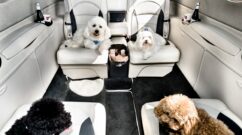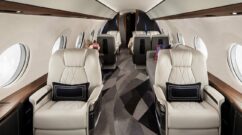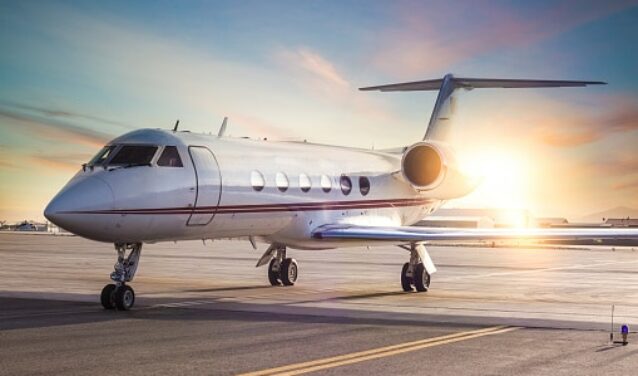
Is business aviation compatible with the ecological transition?
There’s no denying it: tomorrow, we won’t be traveling the way we do today. Driven by the ecological transition, business aviation consumption patterns are changing, and new aspirations are emerging. Technological attempts are now emerging to develop jets that are not only more efficient, but also more durable and much less polluting. The result is a de-carbonization of the skies, and a collective challenge for airlines to become ever more fuel-efficient.
In this article, AEROAFFAIRES takes a look at the fuel consumption of a private jet, the advances made in terms of sustainability, and the concrete solutions that are shaping the future of air transport.
Private jet: climate ally or foe?
In recent years, there has been a real increase in ecological awareness. More than ever, modes of transport are being questioned, rethought and optimized in order to reduce the notorious “carbon footprint”.
Business aviation is no exception to the rule, and many are skeptical about the correlation between this discipline and ecology.
This is hardly surprising when you break down the price of a plane ticket, and fuel costs account for a quarter of it. According to the United Nations Climate Expert Group, 5% of CO2 emissions come from air traffic, and business aviation accounts for 8% of this traffic.
The airline industry must therefore redouble its efforts to innovate, mobilize and reinvent an eco-responsible mode of transport.
How much fuel does an aircraft really consume?
It’s difficult to give a single answer to the question “How much does an aircraft consume?”, because fuel consumption depends on a number of parameters. Each aircraft model performs differently, depending on its design, mission and flight conditions.
Among the main factors influencing an aircraft’s fuel consumption are :
- Aircraft type (short-, medium- or long-haul);
- Service provided (number of passengers carried or cargo load in tonnes);
- Flight distance (the shorter the flight, the more fuel-intensive the take-off phase);
- Cruising speed and flight altitude;
- Weather and air traffic conditions (ground or airborne delays);
- Take-off weight, which includes passengers, baggage, freight and fuel.
Let’s take the example of a long-haul aircraft like the Airbus A350. On an 800-kilometer flight with a takeoff weight of around 245 tonnes, this aircraft consumes around 48 tonnes of fuel, or almost 60,000 liters of kerosene.
This equates to an average consumption of 75 liters per kilometer flown, spread over several hundred passengers.
Significant progress towards more sustainable aviation
1. Growing energy savings
For several years now, aircraft manufacturers have been working to reduce the C02 emissions caused by air traffic. Companies like AirBus and Boeing are rightly investing in more fuel-efficient models, such as the Airbus 220 and Boeing 787.
In 2010, Airbus even launched a range of “Neo” aircraft, which stands for “new engine option”, designed to alleviate this problem. This involves redesigning the aircraft with slimmer wing-tip ailerons, and choosing lightweight materials such as carbon composites, titanium and aluminum.
Some airlines are turning to turboprop aircraft, which consume less fuel. On average, private jets consume just 3.5 liters of fuel per 10 kilometers per passenger. In this way, the “ecological top of the range” is making its mark on the business aviation market, with prestigious yet low-polluting aircraft.
2. Green fuel for air transport
The marketing of a new type of aviation fuel is also noteworthy. The first batches of certified biofuels, made from forestry and agricultural waste, vegetable oils and beet, are entering the market.
While this option has already proved its worth in the automotive sector, it also holds great potential for aircraft. It is estimated that these biofuels can reduce CO2 emissions by up to 80%, since they can be absorbed by plants.
As part of the Lab’line program, AirFrance has launched several Toulouse-Paris flights using biofuel-powered aircraft. Associations such as the General Aviation Manufacturers Association (GAMA) have also joined forces to develop a more environmentally-friendly, sustainable fuel.
Some examples of this coalition: Air BP, Aviator, Bombardier, Dassault Aviation, Embraer, Gulfstream, Textron Aviation and World Fuel Services, Avfuel, Diamond Aircraft
If you’re interested in these aircraft manufacturers, read our article on private jet manufacturers.
3. The challenge of a high-performance, zero-emission aircraft
In 2015, Eviation launched its “Alice”, a 9-seat, 2-crew jet promising a range of 1,000 km without the slightest polluting emission.
The electric aircraft can also fly at a cruising speed of 520 km/h, and its recharging time is half the time of use. Powered by three 260 kW propellers, this aircraft appears to be one of the first viable 100% electric aircraft.
The question is whether this technology could also be applied to larger aircraft. The answer is affirmative: it’s the next big step for aircraft manufacturers..
Electric private jets: a future solution for more sustainable aviation?
Faced with growing environmental challenges, business aviation is exploring new ways to reduce its carbon footprint. Among them, the category of electric aircraft and private jets is presenting itself as a promising alternative. Quiet, innovative and non-polluting in flight, these aircraft could well embody the future of more environmentally-friendly aviation.
Still in the development phase, these electric aircraft should gradually enter the market over the next decade. Their adoption could profoundly transform the standards of private air transport, reconciling comfort, efficiency and sustainability.
To find out more about the models currently being designed, technological advances and the challenges ahead, read our article dedicated to electric private jets and eco-responsible aviation.
aEROAFFAIRES: a concrete ecological commitment
Because ecology is not a constraint but a responsibility, AEROAFFAIRES is also committed to a more respectful approach to our planet.
Thanks to our SkyCO2 program, 100% of the CO2 emissions produced by each private flight are offset by supporting the preservation of Peru’s primary forests. With AEROAFFAIRES, you can book a flight at the best rates, in complete safety and with the lowest possible impact on the environment.
To charter your private jet, contact us 24/7 on +33 (0) 1 44 09 91 82.






